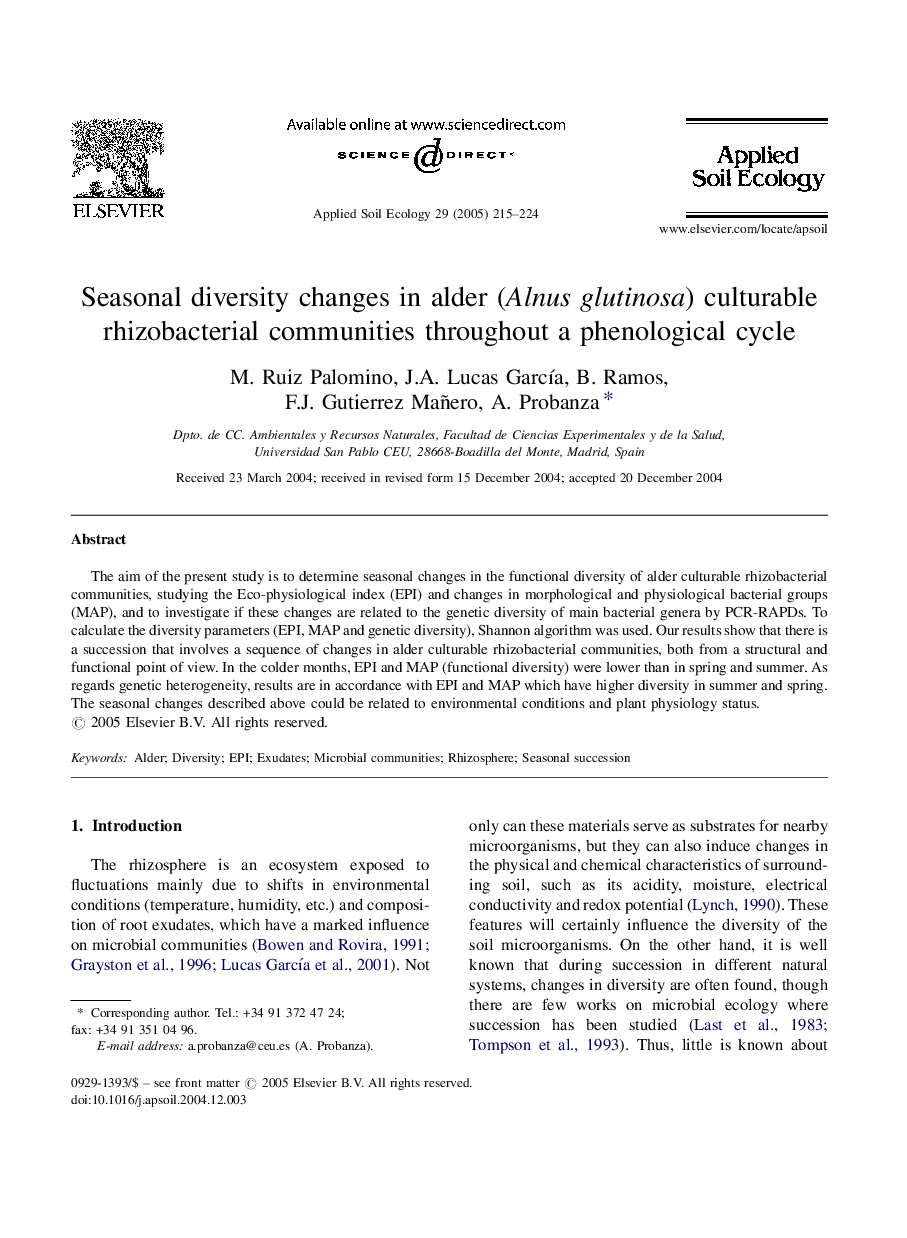| Article ID | Journal | Published Year | Pages | File Type |
|---|---|---|---|---|
| 9445203 | Applied Soil Ecology | 2005 | 10 Pages |
Abstract
The aim of the present study is to determine seasonal changes in the functional diversity of alder culturable rhizobacterial communities, studying the Eco-physiological index (EPI) and changes in morphological and physiological bacterial groups (MAP), and to investigate if these changes are related to the genetic diversity of main bacterial genera by PCR-RAPDs. To calculate the diversity parameters (EPI, MAP and genetic diversity), Shannon algorithm was used. Our results show that there is a succession that involves a sequence of changes in alder culturable rhizobacterial communities, both from a structural and functional point of view. In the colder months, EPI and MAP (functional diversity) were lower than in spring and summer. As regards genetic heterogeneity, results are in accordance with EPI and MAP which have higher diversity in summer and spring. The seasonal changes described above could be related to environmental conditions and plant physiology status.
Related Topics
Life Sciences
Agricultural and Biological Sciences
Ecology, Evolution, Behavior and Systematics
Authors
M. Ruiz Palomino, J.A. Lucas GarcÃa, B. Ramos, F.J. Gutierrez Mañero, A. Probanza,
